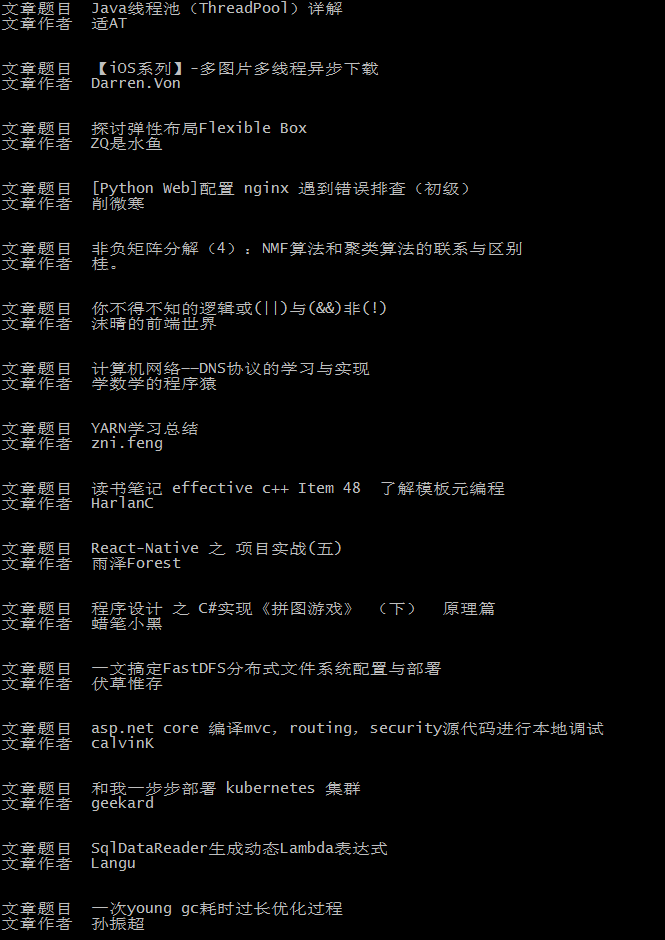node是服务器端的语言,所以可以像python一样对网站进行爬取,下面就使用node对博客园进行爬取,得到其中所有的章节信息。
第一步: 建立crawl文件,然后npm init。
第二步: 建立crawl.js文件,一个简单的爬取整个页面的代码如下所示:
var http = require("http"); var url = "http://www.cnblogs.com"; http.get(url, function (res) { var html = ""; res.on("data", function (data) { html += data; }); res.on("end", function () { console.log(html); }); }).on("error", function () { console.log("获取课程结果错误!"); });
即引入http模块,然后利用http对象的get请求,即一旦运行,相当于node服务器端发送了一个get请求请求这个页面,然后通过res返回,其中on绑定data事件用来不断地接受数据,最后end时我们就在后台打印出来。
这只是整个页面的一部分,我们可以在此页面审查元素,发现确实是一样的
我们只需要将其中的章节title和每一小节的信息爬到即可。
第三步: 引入cheerio模块,如下:(在gitbash中安装即可,cmd总是出问题)
cnpm install cheerio --save-dev
这个模块的引入,就是为了方便我们操作dom,就像jQuery一样。
第四步: 操作dom,获取有用信息。
var http = require("http"); var cheerio = require("cheerio"); var url = "http://www.cnblogs.com"; function filterData(html) { var $ = cheerio.load(html); var items = $(".post_item"); var result = []; items.each(function (item) { var tit = $(this).find(".titlelnk").text(); var aut = $(this).find(".lightblue").text(); var one = { title: tit, author: aut }; result.push(one); }); return result; } function printInfos(allInfos) { allInfos.forEach(function (item) { console.log("文章题目 " + item["title"] + ' ' + "文章作者 " + item["author"] + ' '+ ' '); }); } http.get(url, function (res) { var html = ""; res.on("data", function (data) { html += data; }); res.on("end", function (data) { var allInfos = filterData(html); printInfos(allInfos); }); }).on("error", function () { console.log("爬取博客园首页失败") });
即上面的过程就是在爬取博客的题目和作者。
最终后台输出如下:

这和博客园首页的内容是一致的:
